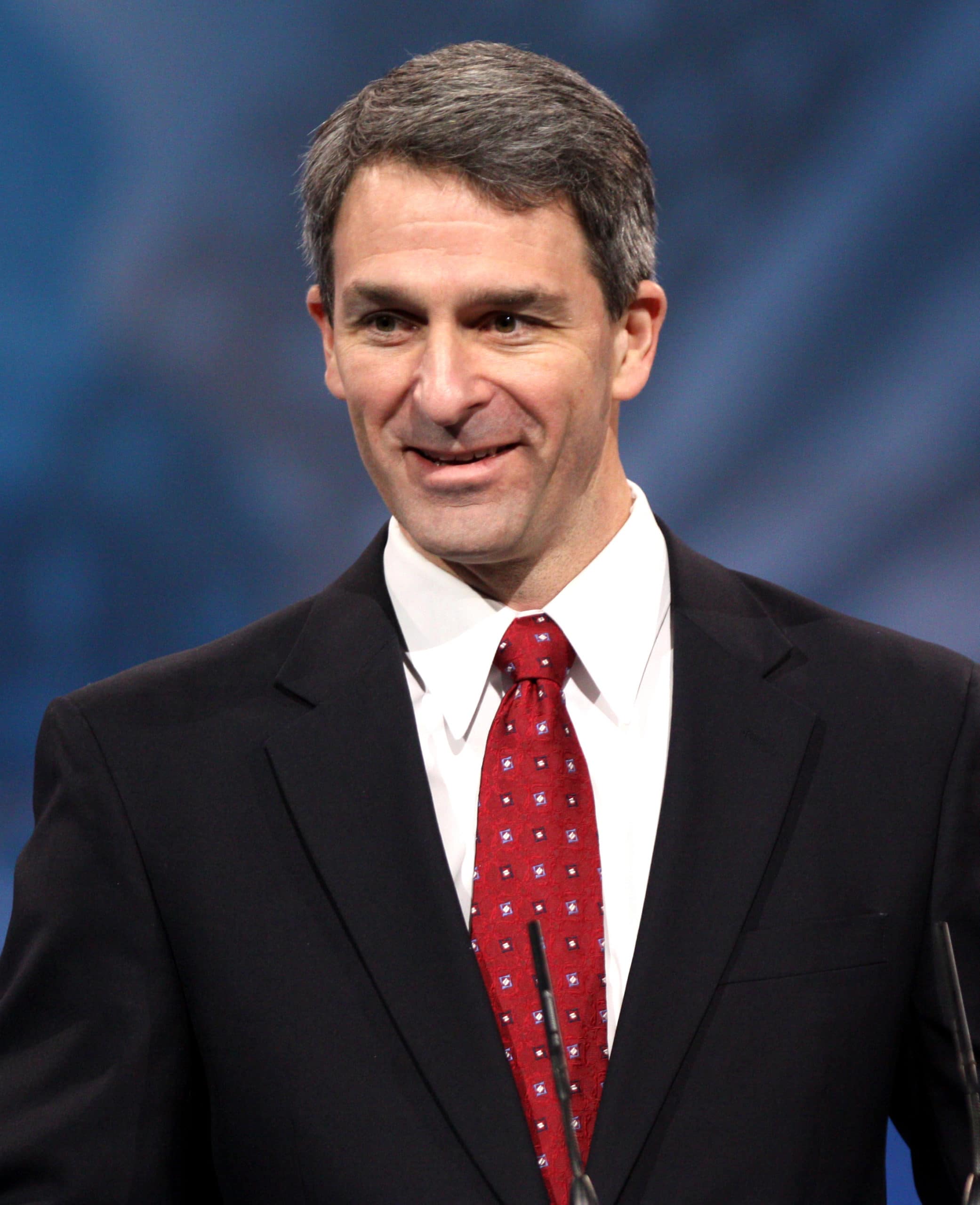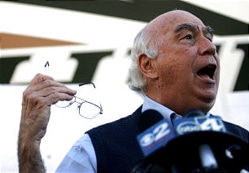Robert Murray, owner of the Ohio-based coal giant, Murray Energy Corporation, filed a defamation lawsuit against a prominent liberal blogger and The Huffington Post.
Filed on September 25 in Belmont County’s Court of Common Pleas, Murray’s complaint accuses Mike Stark, creator of FossilAgenda.com and Stark Reports, and The Huffington Post of defamation and invasion of privacy stemming from Mr. Stark’s September 20 article, “Meet the Extremist Coal Baron Bankrolling Ken Cuccinelli’s Campaign.”
Stark, represented by the American Civil Liberties Union of Ohio and David Halperin, former Senior Vice President of the Center for American Progress pushed back this week, filing a motion asking the presiding federal judge to dismiss charges for the case.
Published in the midst of the heated Virginia gubernatorial race between Republican Virginia Attorney General Ken Cuccinelli and Democrat Terry McAuliffe – one of Hillary Clinton’s 2008 presidential campaign chairmen – Stark’s piece apparently struck a nerve with Murray, one of Cuccinelli’s key campaign contributors.

Ken Cuccinelli; Photo Credit: Wikimedia Commons
In the piece published on The Huffington Post, Stark points to the $30,000 that Murray Energy has given Cuccinelli, as well as Robert Murray’s campaign work on behalf of 2012 Republican Party presidential nominee Mitt Romney. Stark also covers Murray’s call for the impeachment of President Obama at a recent speaking engagement, along with his firing of 150 workers after Obama’s 2012 victory over Mitt Romney and the prayer he offered the U.S. public after Obama’s 2012 victory.
The rationale behind the defamation suit for Murray boils down to Stark and The HuffPost referring to Murray as an “extremist” and pointing to the firing of the 150 Murray Energy workers as a potential “fulfillment of a promise” after the 2012 presidential election.
“The Defamatory Statements…were published with malice…[and] were understood and interpreted by readers of The Huffington Post to be assertions of fact, not opinion,” says Murray’s complaint. “These false and defamatory statements have severely harmed the reputation of the Murray plaintiffs [and have] caused great mental anguish and emotional distress for Plaintiff Robert E. Murray and his family members.”
To protect free speech and robust public debate, courts make it difficult for well-known public figures to sue for defamation or the related claim of false light invasion of privacy. To avoid those limits, Murray’s lawyers argue Murray is not a public figure at all.
“Murray is neither a public figure not a limited public figure in that he has neither voluntarily sought public or media attention, nor has he achieved such a status by reason of the notoriety of his achievements,” reads the complaint.
Plaintiffs: Lost Profits, Tarnished Reputation
Of the 39 paragraphs in Murray’s defamation charge count, nine of them argue Stark and The Huffington Post have damaged Murray personally and professionally and will end up hurting his company’s profit margins.
“Publication of the Defamatory Statements has caused and will continue to cause Murray and members of [his] family to suffer great mental anguish and emotional distress,” the complaint reads. “Murray Energy’s standing in the business community as a respected corporate citizen has been damaged by the publication of the Defamatory Statements.”
For Murray, it all boils down to the possibility of the loss of cold, hard cash.
“Publication of the Defamatory Statements will cause lenders to be less willing to engage in financing transactions with the Murray Plaintiffs, thereby preventing them from gainging access to capital needed to operate their businesses or making it more difficult and expensive for them to obtain such capital,” reads the complaint. “Publication of the Defamatory Statements will cause the Murray Plaintiffs to suffer a loss of business opportunities and loss of potential and/or existing customers for their businesses.”
In all, Murray has asked Stark and HuffPost for over $75,000 in damages, plus paying the court fees and costs of Murray’s attorneys.
Murray is represented by Kevin Anderson of Fabian & Clendenin, who sits on the Utah Mining Association’s Executive Committee, as well as by two attorneys from Murray’s in-house counsel and Mark Stemm of Porter Wright Morris & Arthur.
Stark’s Attorneys Issue Motion to Dismiss
On November 1, attorneys representing Mike Stark hit back. (The HuffPost has its own set of attorneys working on its behalf who will respond soon.)
They have requested that the judge of record for the case issue an order to dismiss the case on its face, also asking the judge for a date in court to hear out an oral argument between Stark and the Murray Plaintiffs on the motion to dismiss.
Stark’s motion was brought to the U.S. District Court for the Southern District of Ohio, Eastern Division, where the case was removed from the Belmont County Court of Common Pleas, the site Murray originally brought his complaint to.
ACLU of Ohio and Halperin open up the motion to dismiss with a bang.
David Halperin; Photo Credit: Generation Progress
“Stark’s article contains no false statements of fact, nor is it misleading, nor does it place Murray in a false light,” they wrote. “More importantly, for purposes of this Motion to Dismiss, the statements in the article about which Plaintiffs complain are not assertions of fact. Rather, the Complaint takes issue only with opinions offered by Stark in the article.”
The rest of the argument tackles the distinction between a straightforward news piece and the opinion-based nature of Stark’s article and pieces published in The Huffington Post.
Citing a litany of cases, Stark’s attorneys point to a simple fact: Opinion pieces both in the state of Ohio and as enshrined by the U.S. Supreme Court are essentially legally immune from defamation suits.
“Stark is a persistent, aggressive critic of the coal industry, political conservatives, and others, and an advocate for policy reforms. Thus, the immediate context factor strongly favors viewing Stark’s statements in the article as opinion, not fact,” the attorneys argue in the motion to dismiss. “The Court may take judicial notice that the Huffington Post blog is a well-known forum for people to write opinion articles – the online equivalent of a newspaper editorial page.”
The defense also fends off Murray’s attorneys bringing a defamation suit while at the same time saying he’s not a famous individual.
“[This lacks both] factual support and it is directly contradicted by the Complaint as a whole,” argued the defense. “Murray is the well-known head of one of the country’s largest corporations, and he has, by his own admission, deliberately asserted himself into public controversies about public policy, politics, and elections.”
In order for Murray’s complaint to prevail, he must prove “actual malice” on Stark’s part, the defense argues. They don’t think Murray’s attorneys complaint passes that legal bar and therefore the case should be dismissed out of hand.
“Even if the Complaint were interpreted to allege false statements of fact, this Court should dismiss for the additional reason that Complaint does not allege any facts to support the assertion that Stark acted with actual malice, that is, with knowledge that a statement was false or with reckless disregard for whether a statement was false – the legal threshold for a defamation claim brought by a public figure,” reads the motion to dismiss.
Defamation Lawsuits as SLAPP Lawsuits
This isn’t Murray’s first time bringing a defamation lawsuit against a journalist.
Rather, it’s the continuation of a trend of using suits of this sort as a bludgeon to intimidate journalists from writing stories shedding his actions both as an individual and owner of a major coal corporation in a negative light.
TransCanada – owner of the Keystone XL tar sands export pipeline – has used similar legal tactics, utilizing the Strategic Lawsuit Against Public Participation (SLAPP) in its attempt to halt Tar Sands Blockade activists from committing acts of non-violent civil disobedience in Oklahoma and Texas in its attempt to fend off construction of Keystone XL‘s southern half.
“[Murray] likely realizes that a lawsuit like this has the effect of diverting resources that a writer or activist like Mike Stark might otherwise use to expose and question the actions of Murray, Murray Energy, and the coal industry,” explained Stark’s lawyers. “This kind of lawsuit could also deter others from engaging in commentary and criticism about Murray and these issues.”
It’s a classic case of the “chilling effect,” with the defense noting Murray has at least two other defamation lawsuits pending in Cuyahoga County, Ohio, also filing suit in 2012 and eventually settling with prominent Charleston Gazette reporter and author of the “Coal Tattoo” blog, Ken Ward, Jr.
“To the extent that this lawsuit may have the purpose or the effect of chilling free speech on matters of public concern, it is precisely the kind of situation the courts have sought to address,” the defense wrote in its conclusion.
Under the federal court rules, a response to a motion is due 14 days after the motion is filed, meaning Murray’s attorneys have until November 15 to rebut the defense’s motion to dismiss.
Photo Credit: Oil Change International
Subscribe to our newsletter
Stay up to date with DeSmog news and alerts








